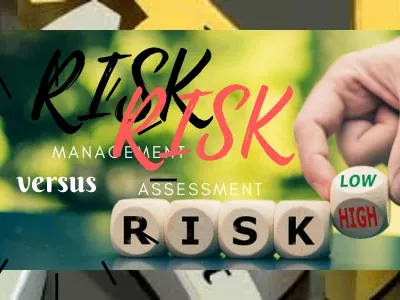Safety Risk Management is a formal process that is used to identify hazards associated with airline operations, analyze and assess the risks associated with those hazards, and implement controls, when necessary, to prevent future accidents and incidents. The safety risk management process can be both reactive and proactive. It is used to prioritize the resulting process improvements to ensure the best allocation of resources.
Before answering the question, I
will give you the following definitions to facilitate understanding.
What Is the Safety Hazard?
A condition or an object with the
potential to cause death, injuries to personnel, damage to equipment or
structures, loss of material, or reduction of the ability to perform a
prescribed function.
What Is the Safety Risk?
The assessment, expressed in terms
of predicted probability (Frequency) and severity, of the consequence(s) of a
hazard taking as reference the worst foreseeable situation.
Safety Risk Management
In the recent developments in
fundamental risk management principles and strategies, there are two pillars of
risk management.
A- The main risk management strategies available.
It is the macro-level process of
assessing, analyzing, prioritizing, and making a strategy to mitigate
threats/hazards to airline operations.
So, risk management is the
overarching umbrella when it comes to risk. It includes both risk assessment
and risk analysis.
The Safety Management system
involves the second component (risk management). It defines the purpose of the risk management
activities and specifies goals and criteria. It offers the airline safety
managers the ability to maximize the realization of available opportunities to avoid
risks.
B- The structure of the risk management process.
It deals with every single hazard
in any operational context or for all operation scop as a risk management
strategy.
The risk management process
includes:
1- Establish context
For example, ground operations.
2- Risk Identification
The risks identification is the
process of determining the predisposing risk conditions that can reasonably be
expected to affect airline operations. In the hazard's identification process,
risks are identified considering procedures, human factors, equipment,
training, and related operational environment aspects. In addition, it
identifies the authority, responsibilities, communication interfaces, process
measures, and controls to assure that the operational tasks are accomplished as
intended. Also, that all related functions are interacted with properly.
3- Risk Analysis
is the micro-level process of
measuring risks and their associated impact.
A- Consequences
•Risk
Analysis: Severity
The possible consequences of an
unsafe event or condition, taking as reference the worst foreseeable situation.
B- Likelihood
•Risk Analysis: Frequency (predicted probability)
The likelihood that an unsafe
event or condition might occur.
C- Tolerability
• Risk Analysis: Evaluation
To judge the significance of the
risk.
4-Risk Control (Risk treatment): Mitigation
Actions to Take
Control: Prevents the consequence from happening.
Mitigation: This does not prevent the consequences from
happening, but it lessens the severity of the consequences.
Risk Assessment
It is a micro-level process within
risk management. It aims to break down hazards into identifiable categories and
define all the potential impacts of each risk.
It includes the following:
-Identifying risk
- Analysis risk
- Evaluating
risk
Summary
Risk management is the macro-level
process of assessing, analyzing, prioritizing, and making a strategy to
mitigate threats to an airline’s operations.
It aims at a balanced allocation
of resources to address all risks and viable risk control and mitigation.
Furthermore, it is a key component of safety management systems.
While risk assessment is a
micro-level process within risk management. It aims to break down hazards into
identifiable categories and define all the potential impacts of each risk.


